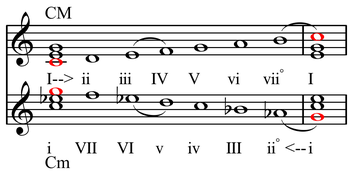Our website is made possible by displaying online advertisements to our visitors.
Please consider supporting us by disabling your ad blocker.
Riemannian theory

Riemannian theory, in general, refers to the musical theories of German theorist Hugo Riemann (1849–1919). His theoretical writings cover many topics, including musical logic,[1] notation,[2] harmony,[3] melody,[4] phraseology,[5] the history of music theory,[6] etc. More particularly, the term Riemannian theory often refers to his theory of harmony, characterized mainly by its dualism and by a concept of harmonic functions.
- ^ Musikalische Logik. Hauptzüge der physiologischen und psychologischen Begründung unseres Musik-systems, Leipzig, 1873.
- ^ Studien zur Geschichte der Notenschrift, Leipzig, 1878; Die Entwickelung unserer Notenschrift, Leipzig, 1881; Notenschrift und Notendruck, Leipzig, 1896.
- ^ Skizze einer neuen Methode der Harmonielehre, Leipzig, 1880; Handbuch der Harmonielehre, Leipzig, 1887; Vereinfachte Harmonielehre, London/New York, 1893.
- ^ Neue Schule der Melodik, Hamburg, 1883.
- ^ Katechismus der Phrasierung, Leipzig, 1890, 2d edition Vademecum der Phrasierung, 1900, 8th edition as Handbuch der Phrasierung.
- ^ Geschichte der Musiktheorie im IX.–XIX. Jahrhundert, Berlin, 1898.
Previous Page Next Page


